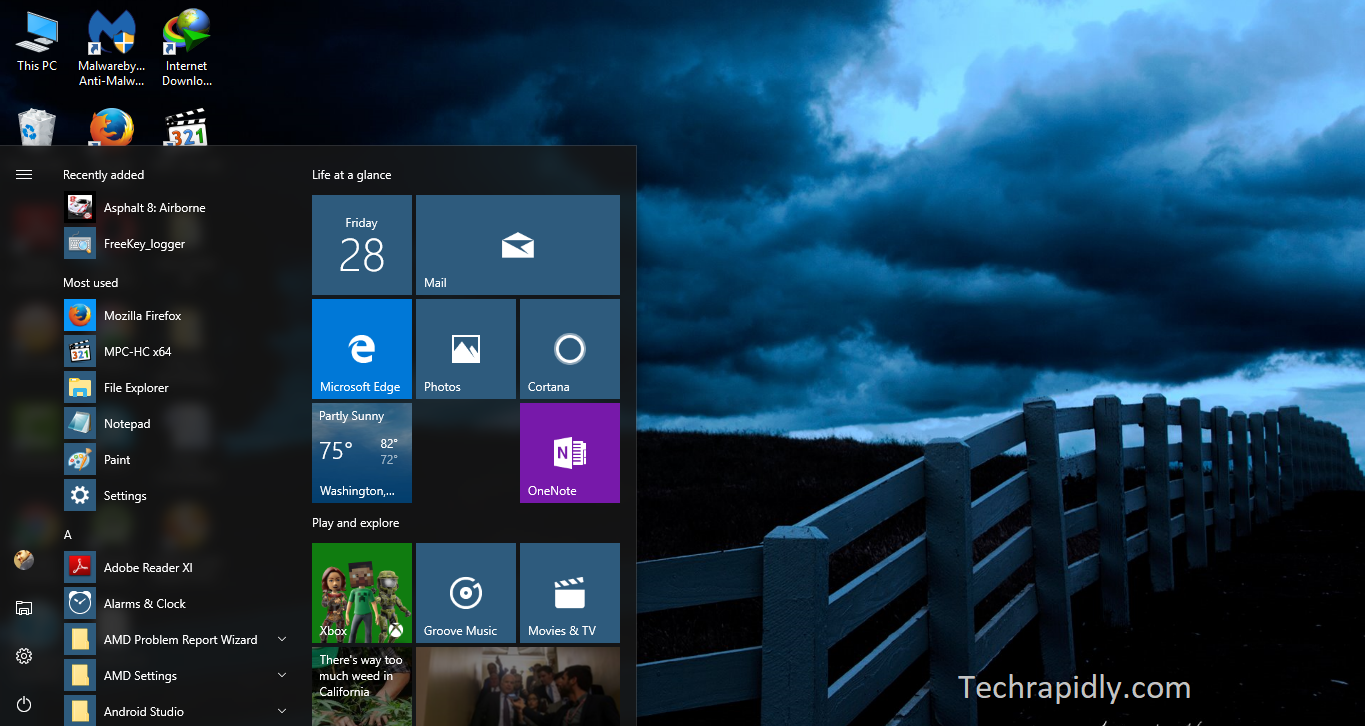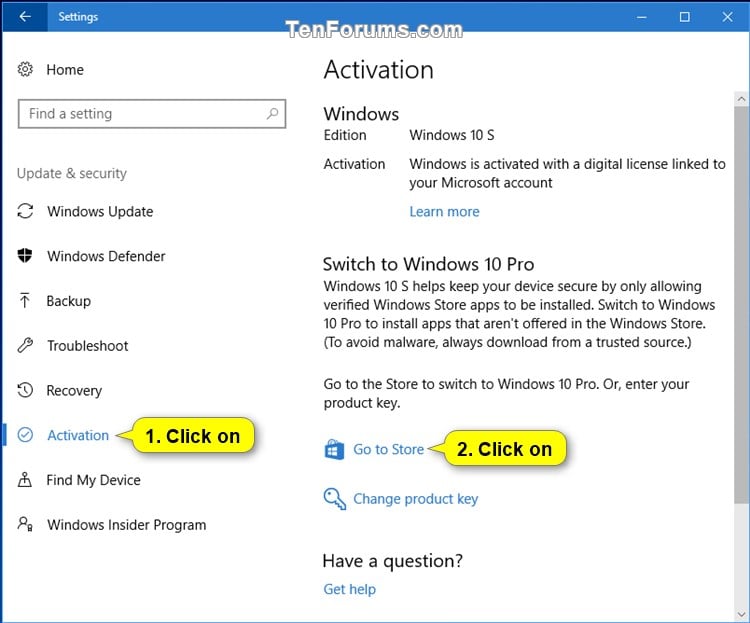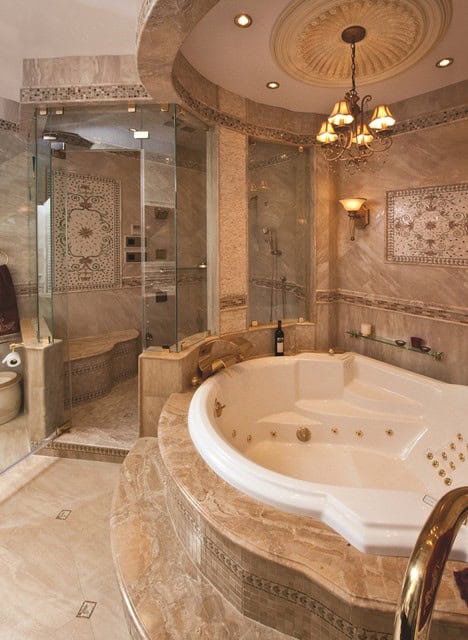Table of Content
I have like 7-8 WIndows 7 Ultimate licences so I got Win 10 pro on 3 of them. I do need some domain resources so it's usefull for me at home. It all depends on the need but, if it was like a $10 difference, even RDP , it's worth it but, $100+ more again, depends on your needs. Also, as I said above, Group policy editor comes with Pro, not home, so it's a lot easier to "TWEAK" WIndows 10 . On home, it's mostly registry settings for everything and can be a pain to hunt down if you dont know what your looking for.
Windows 10 S is focused on simplicity, security, and speed. More specifically, it greatly restricts security and other settings, resulting in faster performance. In fact, while S-powered computers have fewer features than Pro, they are reported to boot 15 seconds faster than Pro machines. Rolling out updates for all computers is also incredibly easy with Pro’s Windows Update for Business service. From a central console, you can manage how and when Windows 10 devices are updated so that they don’t disrupt day-to-day operations. Most Windows 10 users have experienced those inconvenient moments when an automatic update has to complete its process, causing your system to be relatively unresponsive.
Windows Sandbox
But you will get a free upgrade only within one year after the Windows10 release. It's worth noting that Windows 11 is a free upgrade from Windows 10 but if you own neither right now you're still going to need to pick up a key. How-To How to Find Your Windows 11 Product Key If you need to transfer your Windows 11 product key or just need it to do a clean install of the OS,...
Even though there are 7 editions, you can use only these two editions in your PC. That’s a $40-$80 difference that could be put towards a better video card or more memory, but only if you don’t need the additional features Windows 10 Pro offers. How-To How to Make a Public Profile on Snapchat Public profiles on Snapchat give you greater exposure and the chance to reach more users. Coming from premium versions of all preceding Windows iterations, paying extra for Pro does not exempt me from the forced update , or disabling ALL telemetry. I’ll be on Win7 until I master A Linux distro, or go Mac…which isn’t much better, but at least Apple is upfront about their data handling.
How to prepare for the Windows 11 upgrade
Most other editions pretty much just branched off of those two. Windows has offered different editions for a good part of its existence as an operating system. Apps in the store does not mean access to apps in the windows store. It's your own private section that you can use to develop and "publish" apps too.
There are also advanced features that power users in home environments might find they need. A built-in virtualization solution such as Hyper-V can be the ultimate solution for compatibility issues with older apps. With each revision of Windows 10, the real risk of compatibility issues arises.
Features: Windows 10 Pro Has More Features
The decision should be based on the differences in the features, the technical level of the user and the network environment in which it will be used. The below examples of these have been bumped up to become Pro version upgrades or features that Home users can't use until they upgrade to Pro. The difference is based on whether the license you activate is for Home or Pro.

It seems as if Microsoft is TRYING to drive it’s customers to Linux (I don’t think MAC is much better, if you want to control your own machine). I’m not paying for a platform for M$ to use – I’m paying for a platform for ME to use and I want an operating system that HELPS me do that – not one that HINDERS me from doing that. The cost is a factor—it’s $100 extra, and there are issues regarding security.
And if you want more features, you can upgrade from 10 S at an affordable price. To explore new apps, Home users can sign up for the Windows Insider program, but since this version is light on features, there is usually a limited selection of early release apps to play with. If you decide to switch from Home to Pro later, the upgrade will cost you $99. Even though you may not make use of the extra options today, having them available as your business evolves should be a serious consideration and will save you money in the long run. Knowing your needs for an operating system helps in your decision between Windows 10 Home versus Windows 10 Pro.
With Windows 10 Home, you're still able to start Remote Desktop Protocol sessions, but you can't remotely control your PC from another device on your network natively. Fortunately, there are many free options like TigerVNC and TeamViewer that offer the same functionality and even some additional features that RDP doesn’t offer. Windows 10 Pro seems like the best edition to get—it’s a jack of all trades, and even features that would seem worthy in a home environment are becoming exclusives in Pro with each revision.
Being able to join Office 365 AzureAD is an awesome feature, especially for small business environments where you don't have an on premise server running anymore. Moving to Windows 10 Professional makes sense for people who could use its more advanced features—and adding more of them, over time, makes it more appealing. It costs money, though, so don’t feel compelled to upgrade unless you really need them. Windows 10 Home will suffice for the majority of individual or family users. Windows 10 Home pushes patches to your PC immediately, allowing you to defer installation for a few hours, but no longer. For some, that might not be the most desirable option.

Windows 11 Pro has everything the Home version has, while also adding a few additional features, mostly serving professional environments. One of the most notable ones is BitLocker, which is a full volume encryption tool that can encrypt your drive volume using 128-bit or 256-bit AES encryption and your computer's TPM. But then I grew up and managed a refurbishing company where we purchased and installed windows on a few hundred machines per month. Now I am in charge of a school network where I manage what is largely a Windows network. Because I had access to 'free' copies of the OS when I was a kid cutting my teeth on technology. It is what I grew up knowing, so it is what I am the most comfortable deploying.
Because Windows 10 Pro includes more features, this makes the attack surface much broader. A feature not included in Home could be easily targeted in Pro. That’s becoming a weaker excuse over the years; maybe a decade ago, when you ran Windows 2000 Professional, XP Professional, or NT 4 Workstation, it would have been a reasonable excuse to avoid it. It’s not strange these days to visit a home where families speak a mix of tongues. Windows 10 Home does support language packs, but the confusion around country-specific distributions and single-language editions makes it hard to know if it officially does or not. Windows 10 Pro comes out of the box ready to download and install different language interfaces.

Along with that, both versions can be easily upgraded to Windows 10 Education Edition. Aside from the above features, there are some other differences between the two versions of Windows. Windows 10 Home supports a maximum of 128GB of RAM, while Pro supports a whopping 2TB. However, unless you're running dozens of virtual machines, you’re not going to exceed the memory limits of Home any time soon.

















